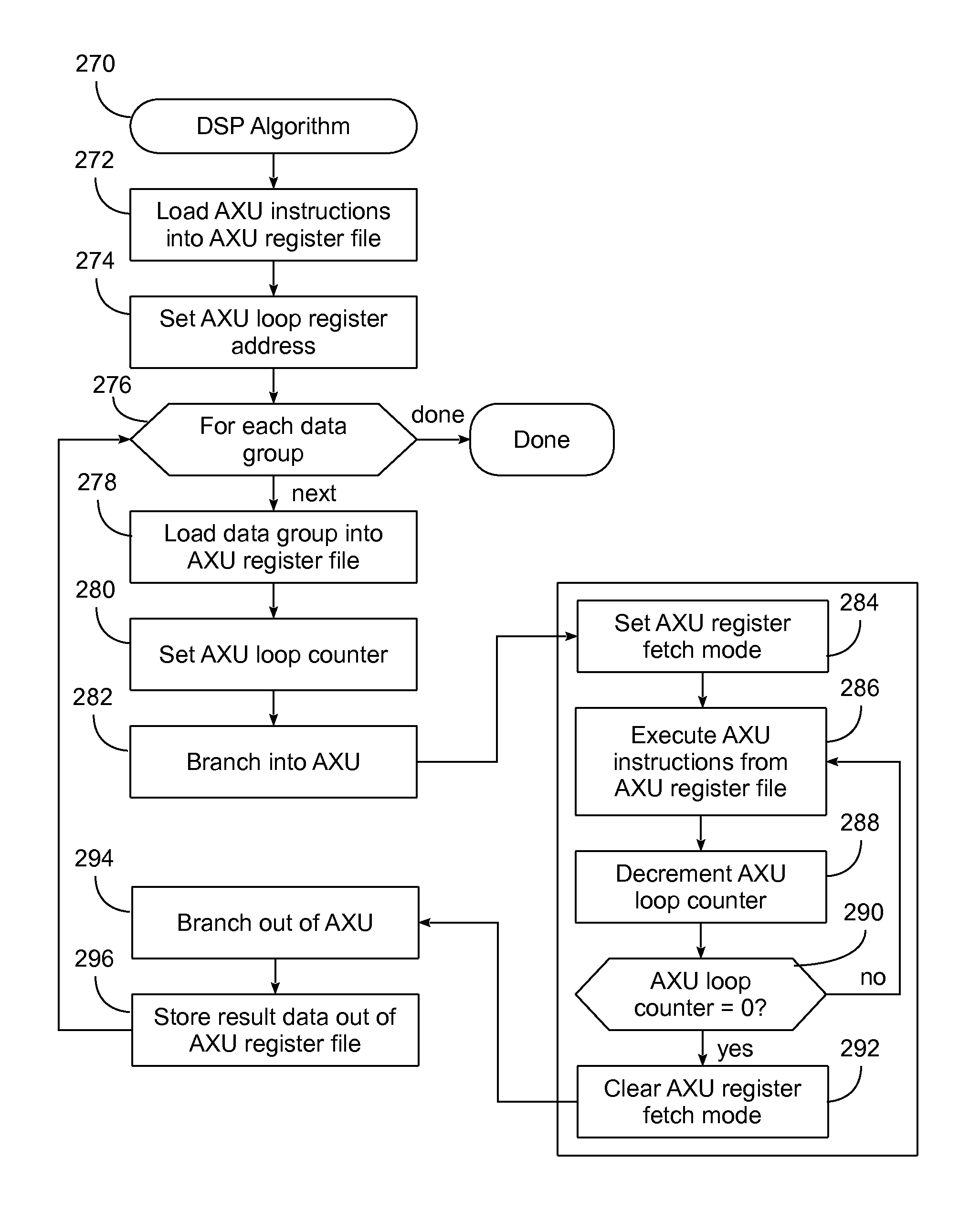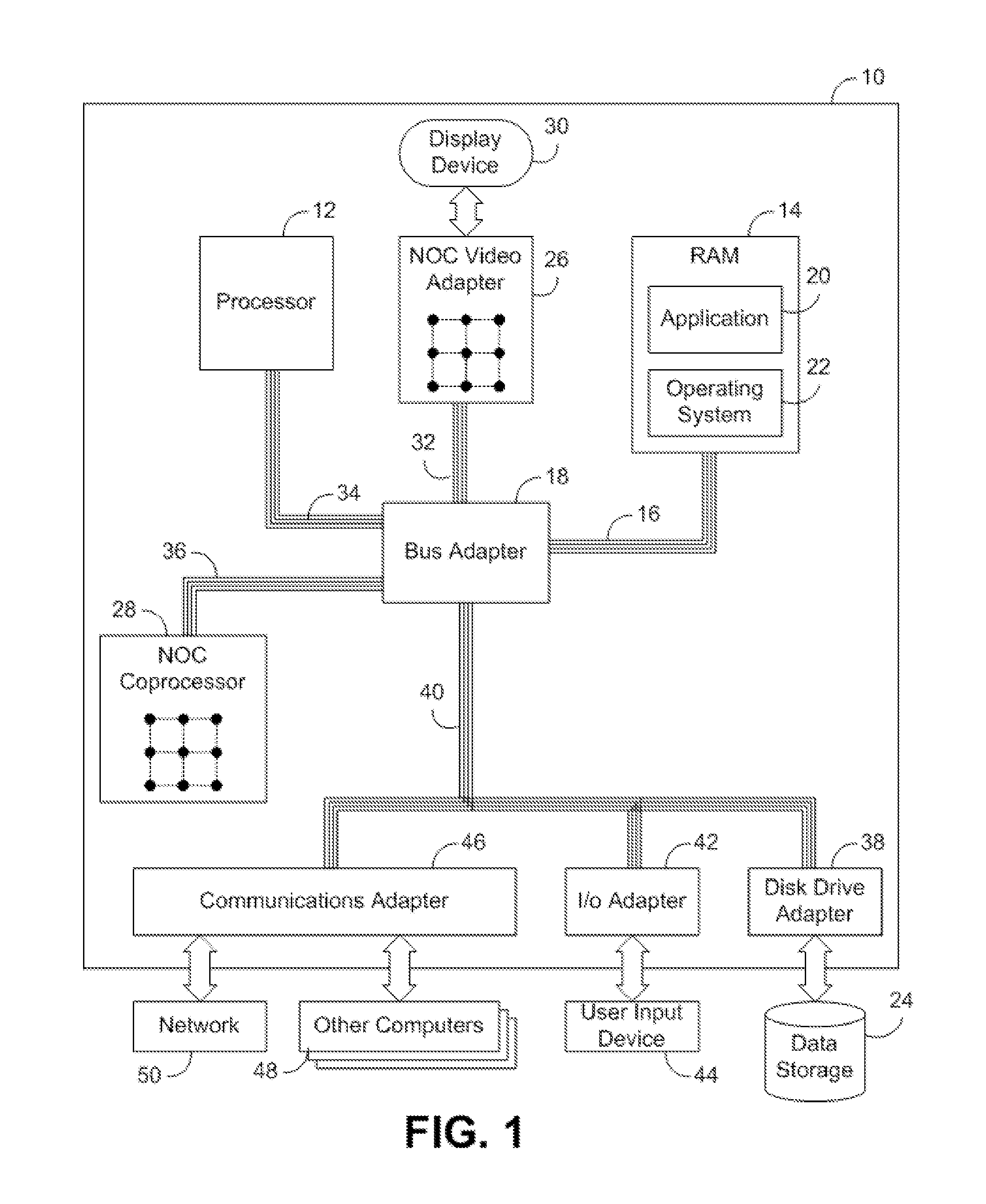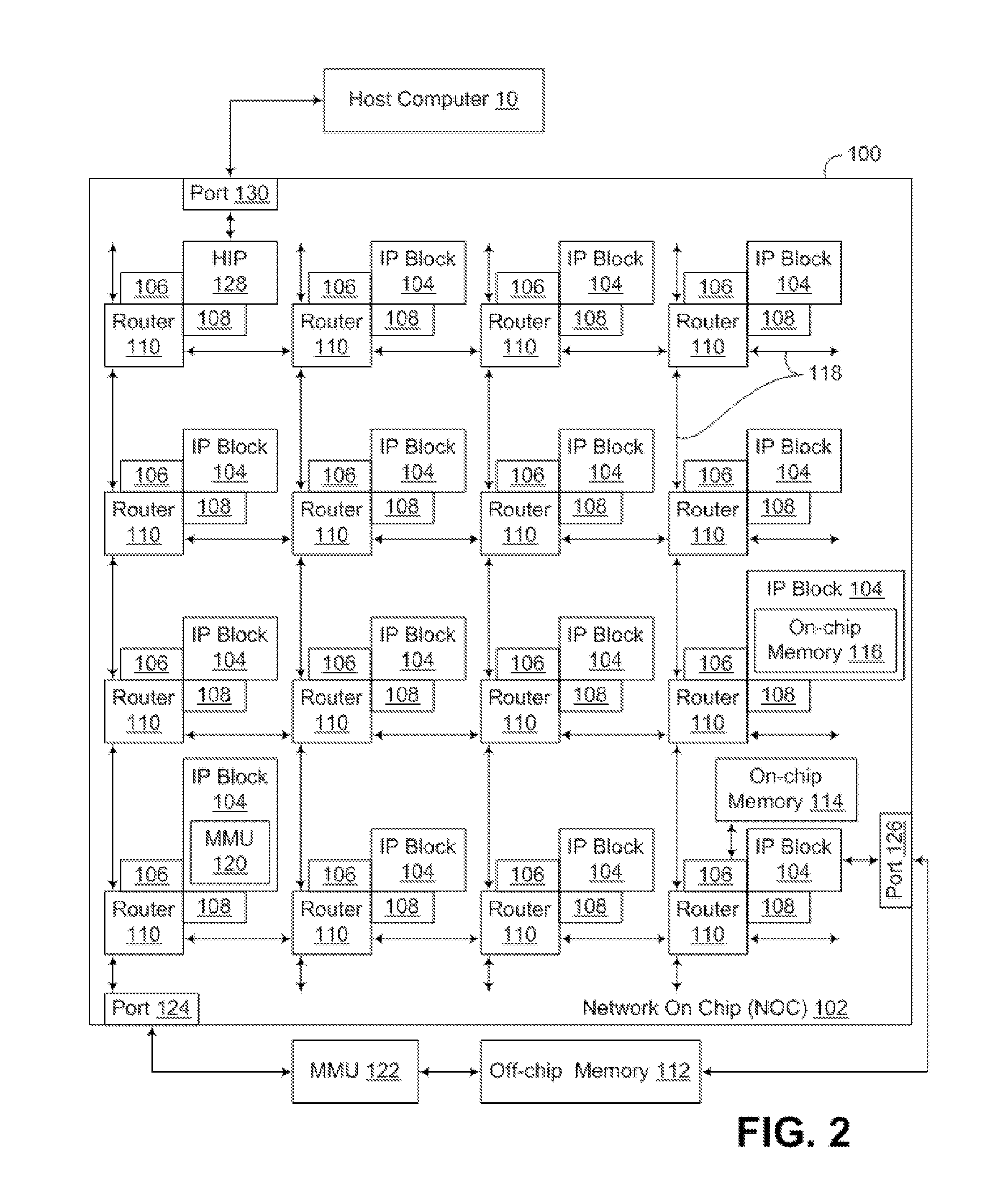Local instruction loop buffer utilizing execution unit register file
a register file and local instruction technology, applied in the field of data processing, can solve the problems of increasing the size and power consumption of such execution units, excessive power consumption, and various techniques for improving the performance of execution units, so as to improve the overall performance of a processing unit and reduce power consumption
- Summary
- Abstract
- Description
- Claims
- Application Information
AI Technical Summary
Benefits of technology
Problems solved by technology
Method used
Image
Examples
Embodiment Construction
[0021]Embodiments consistent with the invention utilize a register file of an execution unit as a local instruction loop buffer to enable suitable algorithms to be performed directly and efficiently within the execution unit. By doing so, other logic circuits in a processing unit utilized for other, general purpose workloads may either be powered down or freed up to handle other workloads, thereby reducing power consumption and / or improving overall performance of a processing unit. In addition, the need for a separate, specialized execution unit may be avoided in some embodiments. For example, for DSP applications where DSP workloads may be required along with other, non-DSP / general purpose workloads, an execution unit may be configured to perform DSP algorithms using a local instruction loop buffer, thereby eliminating the need for a separate DSP accelerator or chip.
[0022]A local instruction loop buffer may be implemented, for example, in a general purpose processing unit, which wi...
PUM
 Login to View More
Login to View More Abstract
Description
Claims
Application Information
 Login to View More
Login to View More - R&D
- Intellectual Property
- Life Sciences
- Materials
- Tech Scout
- Unparalleled Data Quality
- Higher Quality Content
- 60% Fewer Hallucinations
Browse by: Latest US Patents, China's latest patents, Technical Efficacy Thesaurus, Application Domain, Technology Topic, Popular Technical Reports.
© 2025 PatSnap. All rights reserved.Legal|Privacy policy|Modern Slavery Act Transparency Statement|Sitemap|About US| Contact US: help@patsnap.com



